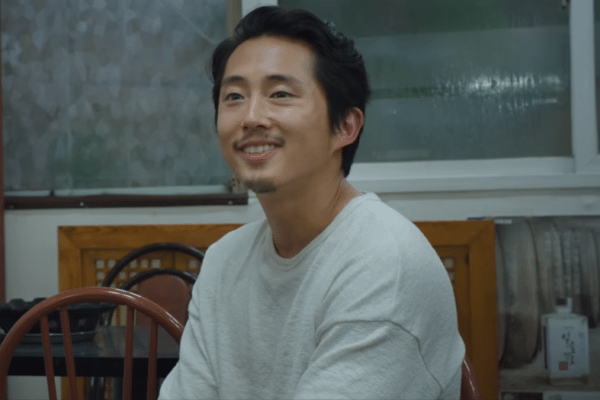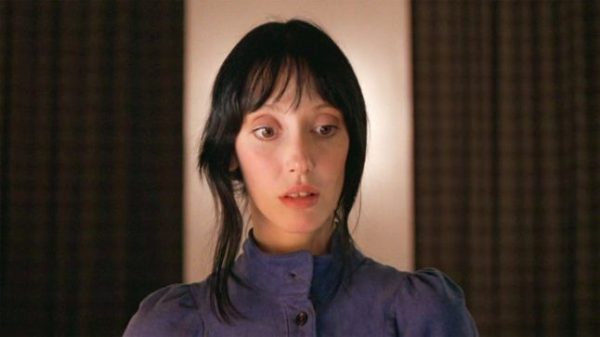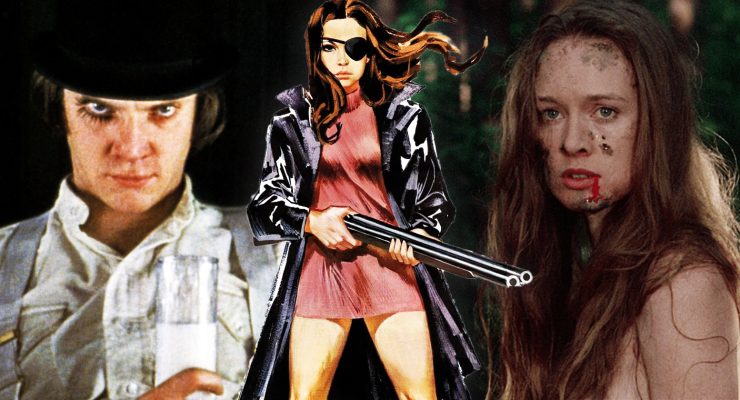It’s time to take a look at those layered films you might not get the first time, and therefore demand multiple viewings…
Cinema is a beautiful thing and depending on your mood, there is every kind of film out there to give you what you need. Some films hit every mark on the first viewing and leave you satisfied that you’ve understood the film and there’s nothing more to glean from it. If you watch Commando, you know that you’ve ‘got it.’ Schwarzenegger takes out the baddies as he sets about rescuing his kidnapped daughter whilst firing off zingers and destroying as much mise-en-scene as possible.
There are no hidden layers or subtext to Commando, beyond the sweaty 80s homoeroticism I suppose. That’s not to say that a film that could be easily consumed as surface entertainment can’t be viewed repeatedly. Lord knows I’ve seen Commando at least 30 times, but there are films that have levels below the surface. Films with subtext and/or intricacies in their construction which means an audience could conceivably watch it multiple times and pick up new subtleties with every viewing.
It can be a dangerous game for filmmakers too, because there have been a number of films that almost wilfully defy surface-level entertainment in favour of the subtext beneath. David Lynch has often made films in his own inimitable quirky fashion to weed out those who will leave the first viewing scratching their head, but leaving enough intrigue and hidden information to lure back the viewers tuned into his frequency.
It’s one of the greatest skills in cinema, to make a film that might deliver an initial indifference or even derision that still leaves enough to compel a viewer to return and even more to potentially fall in love with unearthing more and more new layers each time. Here are a few…
The Master

Paul Thomas Anderson is a master craftsman and he set himself an enormously high bar with There Will Be Blood. He’s a filmmaker who is no stranger to creating illusive works with plenty of depth and Magnolia is certainly a film that benefits from repeat viewings. There Will Be Blood certainly has a rich underbelly but it’s also a grandiose character study set in a very distinct era of American history. Audiences were left in no doubt of the film’s brilliance, already allured by the barnstorming performance of Daniel Day-Lewis. It was hard not to walk out already feeling like you’d just seen a modern masterpiece.
So five years later, Anderson’s long-awaited follow-up had all the hallmarks of a director riding his biggest moment. He could do and make anything and he made The Master. It’s a film that compels you to stay at arm’s length with meandering spells and a feeling of occasionally cobbled vignettes. There were similar traits with Inherent Vice which followed, but that was deliberately scattershot, quirky and trippy.
The Master takes on cults and modern-era religions with a very direct inspiration coming from L. Ron Hubbard and Scientology. The complexity of Joaquin Phoenix’s protagonist, Freddie is enough of a canvas for him to paint his greatest performance. It’s a performance that makes his turn as the Joker look two-dimensional (and that in itself was an exceptional performance). However, the film is given even more weight thanks to the Hubbard-esque, Lancaster Dodd, played by Philip Seymour Hoffman. Anderson beautifully slow-cooks a relationship that bounces across several complicated and contrasting feelings. To each the other is an enigma they’re compelled to solve, hate and perhaps even love.
It’s not that the film has narrative subplots or a huge amount of allegory seeded deep beneath topsoil but, it’s the depth of the characters that compels you to revisit and there’s a feeling of ambiguity by the end of the picture that has seen this film regarded by many cinephiles as perhaps Anderson’s greatest (and most beguiling) work, akin to a stealth jet. Yet as much as it has progressively grown on people through multiple viewings, its inaccessibility (at least in comparison to Boogie Nights or Punch Drunk Love) proved to be a turnoff to some. To pull off wilful evasiveness and to leave so much unanswered is ballsy, to say the least, yet it’s something that fails an artist more often than allows them to succeed. Anderson nails it.
Decision To Leave

Park Chan-wook has quite the CV, filled with an eclectic range of genres but often a very direct and evocative approach to storytelling. Violence is unforgettable and sensuality dazzling in the world of Chan-wook. His films often fire out the traps with either straightforward narratives or those that are full of impactful twists, turns and shocks. J.S.A (Joint Security Area) was a thrilling whodunnit of a murder committed in no man’s land between North and South Korea. Twists, turns and a little diarise on cross-border dynamics.
But it’s a film largely set out to surprise and entertain the audience on their first go. For the most part, everything is nicely tied up at the end. The same can be said of the Vengeance trilogy and the repeat value of Oldboy as an example is to experience that breathtaking intrigue and the punctuations of violence once again.

When Decision to Leave arrived last year it left audiences more than a little surprised. For Chan-wook it was a complete change of pace. This wasn’t a film with love beads (The Handmaiden), oner action scenes in corridors (Oldboy) or unforgettable exactions of revenge (Lady Vengeance), this was a slow-burning tale of intrigue and the connection between a cop and the wife and chief suspect or an executive who may have been murdered.
The film as well as a very clear allegorical underbelly has the feeling of a folk tale about forbidden love. The patience Chan-wook exercises in telling his story and the absolute precision in his shot choices (right down to his use of focus in two shots) and editing show a whole new side only previously hinted at in his other astounding works. It’s like when Scorsese, a true master of the art by the time he hit 40, known for intense largely crime-centric films (and a musical to be fair) went and made After Hours as a total about-turn, that still maintained the master’s hand.
Chan-wook likewise crafts a brooding, forbidden romance that never becomes sexual (and he’s never been shy of shooting explicit sex scenes) with all the attention to detail as usual and totally enthralling. A key theme is the mountains vs the sea with the detective (Hae il Park) and suspect Seo Rae (Tang Wei) representing the two and becoming enamoured and drawn to the other. Although it’s not deeply hidden by Chan-wook, the distinct visual clues are often eye-catching when broad but likewise, those more carefully hidden signifiers are the kind you pick up by the second viewing and beyond.
The pace and look of bombastic moments did alienate some of his fans, but looking deeper into the film proved rewarding for many and ultimately, it might just be his crowning achievement. There’s so much to unpick when you revisit this one. With incredible performances, but Tang Wei in particular is utterly mesmerising.
Burning

Whilst we’re in South Korea it would be remiss not to mention Lee Chang-dong’s Burning. It’s probably my favourite film of the past decade. This doesn’t do spectacle or bombast of any kind and even compared to the aforementioned Decision to Leave, Burning really is a slow ‘burning’ film. This is a mystery that subs tension and twists for ambiguity.
When the core mystery centres around the disappearance of a woman, it takes some cahoonas to have that happen halfway into a two-and-a-half-hour movie but herein lies the genius of Chang-dong. The film sees Jong-su (Yoo Ah-in) reconnecting with childhood friend/neighbour Hae-mi (Jeon Jong-seo) and quickly establishing the personality of both (most importantly, Hae-mi’s perpetual search for meaning and erratic behaviour). They sleep together. Then, after she leaves for a trip to Africa, Jong-su sits a cat that never shows itself in her apartment, Hae-mi returns from her trip with the wealthy Ben (Steven Yeun). The third act, as Jong-su searches for answers to the whereabouts/fate of Hae-mi is as much about his fragmentation as her outcome, whilst Yeun’s exceptional performance maintains a cryptic facade for Ben.

Somehow, Chang-dong can lead us into one theory on the film, whilst laying out conflicting yet feasible information about other theories. It’s a complex web of subtle clues, often elements that are told by visual clues rather than dialogue. It’s a film with numerous scenes of characters saying one thing but meaning something else entirely.
My first viewing though? I wasn’t enamoured, that’s for sure, feeling a sense of indifference and even frustration as the credits rolled but by the following morning, I’d been up most of the night thinking about the film. I thought about it for a week after and then I rewatched it. Like many films on this list, it also has a plethora of YouTube explainers and theory videos that you may or may not buy into. Clearly, though, it’s a film which inspires analysis and repeat viewings, with theories on the three central characters, the underlying comments on class and more. It’s so brilliant, the one overriding mystery I still haven’t solved is just how Chang-dong pulled off this feat.
The Shining

Look, The Shining is a love-it-or-hate-it kind of film. Always has been, and always will be, even if the proportion of those who love it is substantially higher than those who don’t and thus it often ranks in the upper echelons of greatest horror lists. The film’s brilliance is such that even Stephen King has somewhat warmed to a film he vocally bashed back in the day (as despite being based on his book, it’s decidedly more a Kubrick tale than King).
The film usually gets its fans on the first go, because despite its unconventional approach to the genre, the imagery is so memorable, and the film so unsettling that it instantly digs its claws in. What invites so many repeat visits and so much analysis is the playful ambiguity that Kubrick injects. As a concept, ‘the shining’ itself is an unseen entity that’s only vaguely explained, on top of a ghost story that is sprinkled in but never to any great clarity, leaving much to the audience’s interpretation. In Halloween, we know who the bad guy is, and what he’s after and though there’s some mystery, it’s a singular and simple story. Kubrick, as he did with 2001: A Space Odyssey lays out a number of ideas and hides coded messages and visual clues in plain sight.

This film has had more theories, breakdowns and in-depth analysis than any in cinema history. YouTube is chock full (check out Rob Ager’s Collative Learning channel in particular for some of the best) of them and even the more hare-brained are compelling. The notorious documentary, Room 237 dived into some of the wilder conspiracies and theories associated with The Shining.
One thing is for sure, with so many theories out there from the theory of seven, 42, the overlook being a CIA experiment or being a depiction of hell, or the film being Kubrick’s admission of faking the moon landing, there’s plenty for fans to look into and enjoy.
The Matrix
When it came to The Matrix, fans signed up for the visionary special FX, kung-fu fights and balletic gun battles. They came back for those certainly but were also allured by the philosophy and religious references littered throughout the film as well as the existential questions that have been associated with many great sci-fi works.
The Matrix is the original internet super fandom film, a work of rare pop cultural impact. For a good decade after its release, the film spawned limitless websites devoted to excavating every reference, and allegory and constructing as many theories as possible. It was a key time for movie fans, even down to the level of casual, wanting to look deeper into a film. Although the internet’s fascination with film analysis has certainly grown since then, by the same token it’s become a little more niche in general, focused on cinephiles who want to explore the depths of a particular film.

As such this generation of casuals is just more inclined to consume and dispose of the array of disposable films churned out before them and The Matrix doesn’t have quite the same spread as it once did, confined (much like other mere mortal films) to the eyes of the cinephile. New casual movie-watching fans begin and end their fascination with the action and aesthetics.
Mirror
Pick a Tarkovsky, any Tarkovsky! If you’re talking films which need to be given due diligence and watched several times, then Andrei Tarkovsky might just be the master. For him, cinema isn’t merely about narrative or telling conventional stories. It’s about the audience experiencing and feeling the film before them. Going into one of Tarkovsky’s works is to give yourself over to the immersion and make peace with the ambiguity.
In Mirror, his most personal work, it’s a life story set out with the feeling of a dream. It’s vivid, full of intoxicating imagery and powerful moments but with unreliable structure and narration (one character appears in the guise of the unseen protagonist’s ex-wife and mother, which will confuse most on first viewing). It’s unlike anything you’ll ever see as it portrays the reminiscence of a dying man looking back over his life, the idolisation of his mother and the history he lived through. It mixes memories with dreams and despite the narrative jumps within the film it tends to leave a stamp on most viewers.
The beauty of Mirror, maybe more than even Stalker (my favourite AT film) and Solaris, is that audiences continually return to try to piece the puzzle together, but arguably lose sight of the film’s greatest gift being its drifting, dreamlike ambiguity as well as how authentic it is to its creator.
Which films did you need to watch two or more times to really get? Let us know on our social channels @flickeringmyth or hit me up @jolliffeproductions…


















